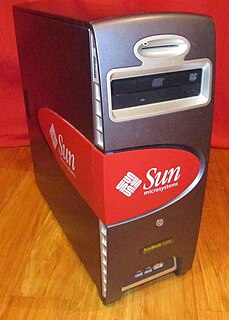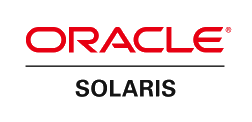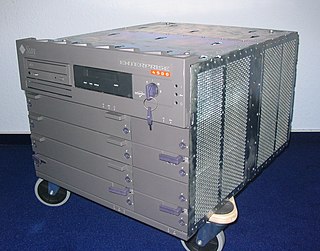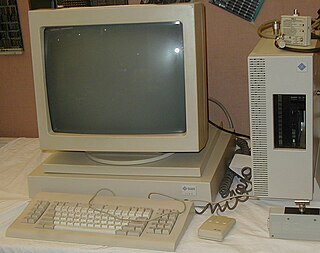Sun Java Workstation was a line of computer workstations sold by Sun Microsystems from 2004 to 2006, based on the AMD Opteron microprocessor family. The range supplanted the earlier Sun Blade workstation line. These were the first x86-architecture workstations Sun had produced, other than the short-lived Sun386i in the late 1980s.

Sun Microsystems, Inc. was an American company that sold computers, computer components, software, and information technology services and created the Java programming language, the Solaris operating system, ZFS, the Network File System (NFS), and SPARC. Sun contributed significantly to the evolution of several key computing technologies, among them Unix, RISC processors, thin client computing, and virtualized computing. Sun was founded on February 24, 1982. At its height, the Sun headquarters were in Santa Clara, California, on the former west campus of the Agnews Developmental Center.

A microprocessor is a computer processor that incorporates the functions of a central processing unit on a single integrated circuit (IC), or at most a few integrated circuits. The microprocessor is a multipurpose, clock driven, register based, digital integrated circuit that accepts binary data as input, processes it according to instructions stored in its memory, and provides results as output. Microprocessors contain both combinational logic and sequential digital logic. Microprocessors operate on numbers and symbols represented in the binary number system.

The Sun Blade series is a computer workstation line based on the UltraSPARC microprocessor family, developed and sold by Sun Microsystems from 2000 to 2006. The range replaced the earlier Sun Ultra workstation series.
Contents
Supported operating systems were Solaris, Red Hat Enterprise Linux WS or SUSE Linux Enterprise Server 9. The Java Workstation name alluded to the workstations being intended to run Sun's Java Desktop System, a GNOME-based desktop environment.

Solaris is a Unix operating system originally developed by Sun Microsystems. It superseded their earlier SunOS in 1993. In 2010, after the Sun acquisition by Oracle, it was renamed Oracle Solaris.

Red Hat Enterprise Linux is a Linux distribution developed by Red Hat and targeted toward the commercial market. Red Hat Enterprise Linux is released in server versions for x86-64, Power Architecture, ARM64, and IBM Z, and a desktop version for x86-64. All of Red Hat's official support and training, together with the Red Hat Certification Program, focuses on the Red Hat Enterprise Linux platform. Red Hat Enterprise Linux is often abbreviated to RHEL.

Java Desktop System, briefly known as OpenSolaris Desktop, is a legacy desktop environment developed first by Sun Microsystems and then by Oracle Corporation after the 2010 Oracle acquisition of Sun. Java Desktop System is available for Solaris and was once available for Linux. The Linux version was discontinued after Solaris was released as open source software in 2005. Java Desktop System aims to provide a system familiar to the average computer user with a full suite of office productivity software such as an office suite, a web browser, email, calendaring, and instant messaging.
The Java Workstation series was replaced by Ultra 20 and Ultra 40 workstations from 2005 onwards.

The Sun Ultra series is a discontinued line of workstation and server computers developed and sold by Sun Microsystems, comprising two distinct generations. The original line was introduced in 1995 and discontinued in 2001. This generation was partially replaced by the Sun Blade in 2000 and that line was in itself replaced by the Sun Java Workstation—an AMD Opteron system—in 2004. In sync with the transition to x86-64-architecture processors, in 2005 the Ultra brand was later revived with the launch of the Ultra 20 and Ultra 40, albeit to some confusion, since they were no longer based on UltraSPARC processors.










